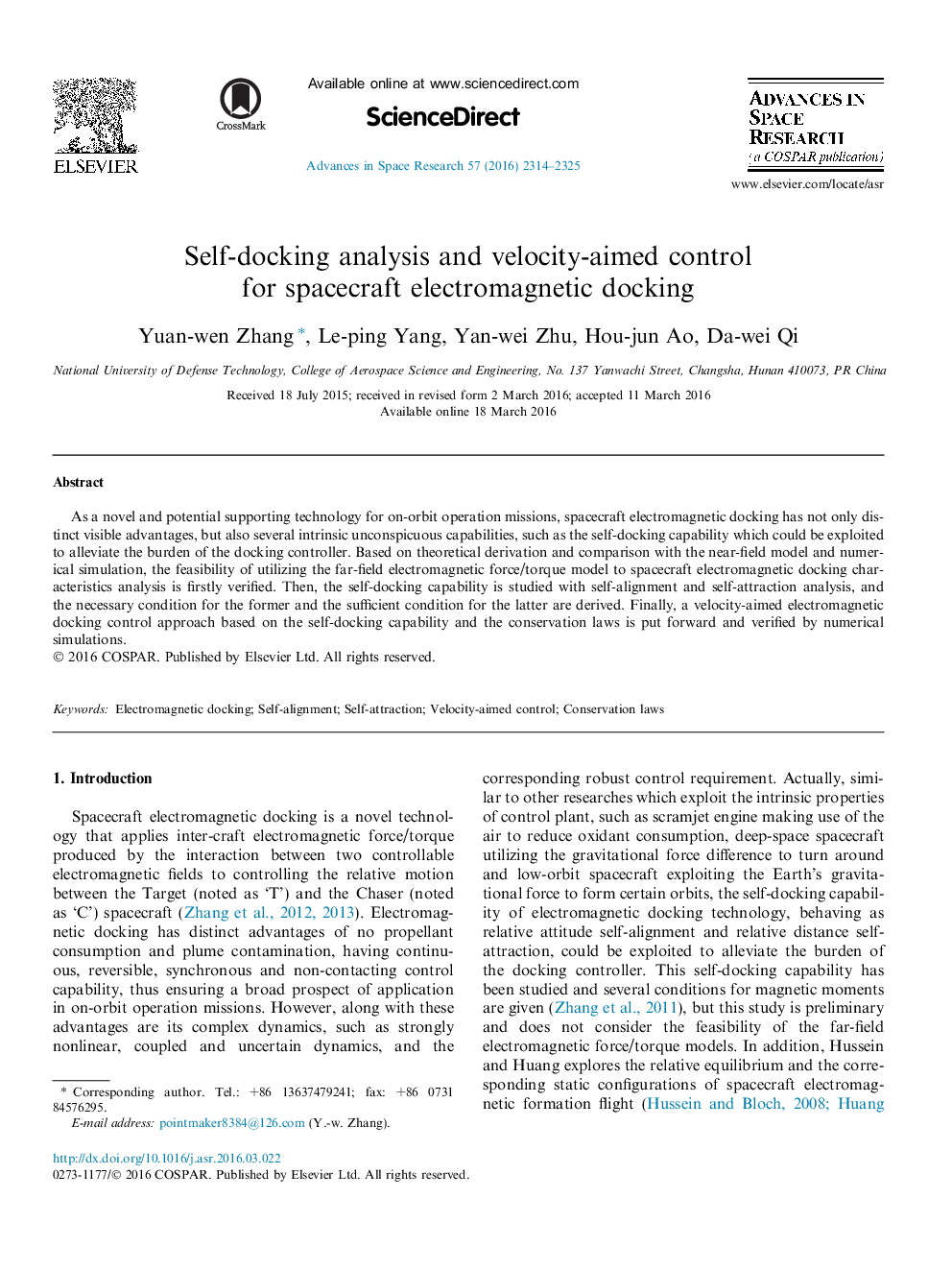| Article ID | Journal | Published Year | Pages | File Type |
|---|---|---|---|---|
| 1763283 | Advances in Space Research | 2016 | 12 Pages |
•Verify the feasibility of far-field electromagnetic models for dynamics analysis.•Analyze electromagnetic self-docking capability and give magnetic dipole condition.•Design velocity-aimed controller for electromagnetic docking via conservation laws.
As a novel and potential supporting technology for on-orbit operation missions, spacecraft electromagnetic docking has not only distinct visible advantages, but also several intrinsic unconspicuous capabilities, such as the self-docking capability which could be exploited to alleviate the burden of the docking controller. Based on theoretical derivation and comparison with the near-field model and numerical simulation, the feasibility of utilizing the far-field electromagnetic force/torque model to spacecraft electromagnetic docking characteristics analysis is firstly verified. Then, the self-docking capability is studied with self-alignment and self-attraction analysis, and the necessary condition for the former and the sufficient condition for the latter are derived. Finally, a velocity-aimed electromagnetic docking control approach based on the self-docking capability and the conservation laws is put forward and verified by numerical simulations.
